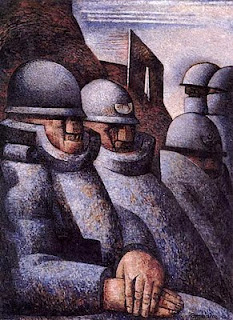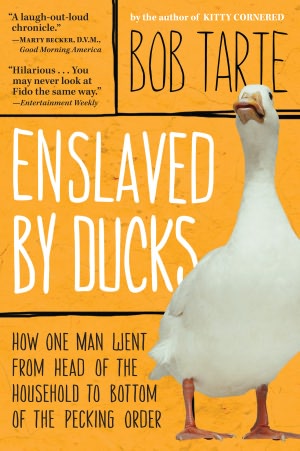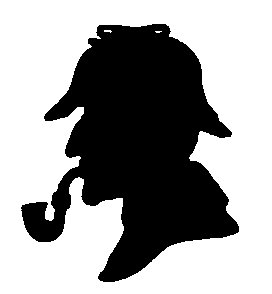The gorgeous film poster.
This is my entry in the first film
Horse-A-Thon (first I ever heard of, anyway) hosted by Page over at her blog,
MY LOVE OF OLD HOLLYWOOD. Many movie mavens will be contributing over the next three days to this unique blog-a-thon, so please check in and see what other terrific
'horse movies' other participating bloggers will be lovingly showcasing.
Going in, I admit that my post today is nothing less than an unabashed fan letter. I am a total Black Stallion fan-girl.
*****************
THE BLACK STALLION (1979), directed by
Carroll Ballard from a script by
Melissa Mathison, Jeanne Rosenberg and
William D. Wittliff, is based on the popular books by
Walter Farley. Transferred to the screen, the production was blessed to have the talents of cinematographer
Caleb Deschanel who turns the entire film into a visual work of art. It was doubly blessed to have a perfectly realized and unobtrusive musical score by
Carmine Coppola.
When I think of
THE BLACK STALLION, the only word that comes to mind is
'exquisite'. It is truly an exquisite film from the rather stark opening scenes until the final credits. I've seen the movie many times and I still cry at the end while the credits roll - no sadness or tragedy, just the allure and effect of overwhelming beauty which is almost too much to bear.
The plot:
It is 1946. A young boy named
Alec Ramsey (played naturally and effectively by
Kelly Reno) and his father are traveling by ship off the coast of North Africa. It appears to be a freighter more than a luxury passenger liner. There are moody, dramatic, slightly disorienting shots of the ship moving along the gray, roiling water - just enough to set the lonely atmospherics. The ship is all white, gray and black, the railings and floors of the passageways, gleaming dark wood. We know almost immediately, from these first few camera shots that we're in for something special.
From what I understand, Deschanel used natural light as much as possible while filming. That accounts for the romantic realism (I suppose you'd call it) which heightens events and paradoxically makes the horse appear to be more a creature of myth than reality.
The father is never named and we only see him in a few scenes. We learn that he is probably a gambler by trade - this from his crafty play at a high stakes poker game, where, surrounded by several ominous characters of various colorful nationalities, he triumphs.
Played by a wonderfully sagacious
Hoyt Axton (who I understand was known more for his country/western singing than his acting) - it's a small jewel of a performance and Axton should have been nominated along with
Mickey Rooney. But as usual, I'm getting ahead of myself.
Once back in their cabin, father checks his winnings and picks out a small metal figure of a horse which he gives to Alec. He tells the boy the story of
Alexander the Great and his magical horse,
Bucephalus. The boy is not totally taken in by his dad's fanciful story, but he holds on to his little treasure. Clearly father and son dote on each other.
There is a black horse being transported on the ship (with a ruthless minder, a sinister Arab, ready with a whip and a sneer) who has taken the boy's interest. In fact Alec sneaks little sugar cubes to the animal and places them in a row on the open port-hole ledge. We get a close-up of the horse's muzzle as he sniffs then gobbles each sugar cube daintily. But the Arab shows up and chases the boy away, then grabs the remaining sugar cube for himself. We hear the horse's outraged noises.
Sometime during that night there is a fire in the ship's hold and an explosion rocks the ship. These harrowing scenes are cut quickly, shot from assorted angles giving the impression of chaotic movement as the fire grows, the ship lists, takes on water and begins to sink - no music, just the awful noises of frenzied desperation and the ship's horn ineffectually sounding.
Panicked passengers and crew grab whatever life jackets they can. The horse manages to break free and still harnessed and trailing retaining ropes, jumps a railing into the water. Father and son are separated and the boy, crazed with fear, tumbles head long into the water as well.
In the black, hellish night of sinking ship, oil-slick water, fire and screaming boy, we see the horse frantically trying to stay afloat - his head and neck being pulled sideways - ropes tangled in the ship's propeller.
Alec has held onto a small army knife. He dives underwater and frees the horse, saving the animal's life as well as his own, for the horse then swims furiously away, the boy hanging on for dear life.
A critic at the time, I think maybe, Pauline Kael (not sure) said that the first half of this movie was breathtaking fantasy or fairy tale and photographed in just that way. The second half is more down to earth and the photography, art direction and story take on a much different tone. I agree with this assessment.
The boy (Kelly Reno) realizes he still has the little metal horse his father gave him.
Alec washes up on an idyllically beautiful island. Dazed and exhausted, he realizes he must now fend for himself. While looking around for the horse, he hears cries of distress and comes across the stallion lying in the sand, trapped, his remaining harness and ropes entangled among the rocks. The horse avoids death a second time because of the boy who inches in warily and cuts him loose. Finally the entire harness pulls free and clearly exuberant, the horse runs off.
Later in some of the most idealistically beautiful photography I've ever seen, they are reunited and Alec must work hard to earn the horse's full trust. The boy is canny and smart beyond his years and eventually figures out a very clever way to ride the horse, first approaching him while both are in the water. During this entire process, boy and horse form a mythic bond.
Some of the more glorious camera shots are from overhead - breathtaking scenes at twilight, shadowy and sepia toned, other times stark black, gold and red/orange. You will never see a horse more exquisitely or elegantly photographed.
Three scenes I remember best: one of the horse, earlier, standing alone on a cliff high above the water almost in silhouette, looking every bit the wild master of his domain. Then there's a remarkable close-up later (in natural fading light) of part of the horse's head blending into the night, his eye fluttering closed in almost complete darkness as he falls asleep. The boy nestled next to him.
A third moment of movie magic occurs as the boy puts the small metal horse given him by his father on top of a boulder. The camera closes in and we see the small stationary figure of myth up close, while in the far distance, we see the black stallion running along the edge of the coastline. On the soundtrack a theme which evokes all things Arabic - or at least, the Arabia of the imagination - a theme which becomes the horse's own as the movie progresses. A dazzling sequence.
Now most of the scenes on the island are, necessarily done in silence accompanied only by occasional soundtrack and natural background noises. So, except for the few scenes on the boat, the first half of the movie is almost dialogue free which only adds to its mystique.
There is no voice-over, no boy talking to himself or to the horse, no sentimentality or cutesy stuff. There is just scene after scene of haunting beauty. Horse and boy joyous in their companionship.
Of course it cannot last.
Alec and the horse are eventually rescued and reality resumes in the second half of the movie. Gone is the island. Back home in an industrial type town outlined in dark, menacing factories, Alec must find a way to keep his horse. The differences between this existence with all its inherent boundaries and limitations and the freedom of the island could not be more pronounced than in the scene of the nervous horse absurdly surrounded by a white picket fence.
Alec's mother
(Terri Garr) is thrilled that her boy has been found safe, but uneasy and confused about the horse in her back yard. One morning
'The Black (as he is now called) runs off when he is frightened by the garbage men, making for one of the more frantic, heart-pounding sequences in the second half of the film.
As
The Black flees, Alec chases after him. The horse now races through an unfriendly, unfamiliar, obstacle-laden landscape risking encounters with automobiles and startled humans, disrupting the ordinary day to day life of a busy town. The camera work is brilliant as we follow
The Black on this bleak journey. The bright colors of the island have given way to dull brown, black and smokey gray.
Eventually, by several strokes of good fortune, the horse will be safely stabled at a small farm outside of town owned by
Henry Dailey, a washed up old jockey - played by
Mickey Rooney.
The last section of the film is made up of the intense training and preparation for an improbable three-way race between
The Black and two thoroughbred champions. An event which the bitter Henry Dailey hopes will make up for his past failures.
The race, when it comes, is nail-bitingly thrilling as
The Black (ridden by Alec) must come from behind to win. There is no music to accompany the mesmerizing camera work, just the horses' loud, rapid breathing and the pounding of their hooves. I remember sitting in the theater spellbound, caught up in the visuals, transported.
In the end, when the credits roll, there is a new musical theme (not heard during the film) as more scenes between Alec and
The Black on the island are unveiled in slow motion. I am usually moved to tears.
To classify this brilliant film as just another children's movie is to do it an injustice.
***************************
The outrage for me is that not only did
Caleb Deschanel NOT win an Academy Award for his absolutely incredible cinematography, he wasn't even nominated. That's when I began to realize that most award givers are clueless when it comes to art.
The hell with 'em.
Here's a link to the
original trailer with an overwrought voice-over which you should ignore. This is what happens when money people get hold of art and trample all over it to make sure that the audience isn't too stupid to understand what they're seeing.
And finally, a link to
the theme played during the end credits.





































.jpg)
.jpg)











